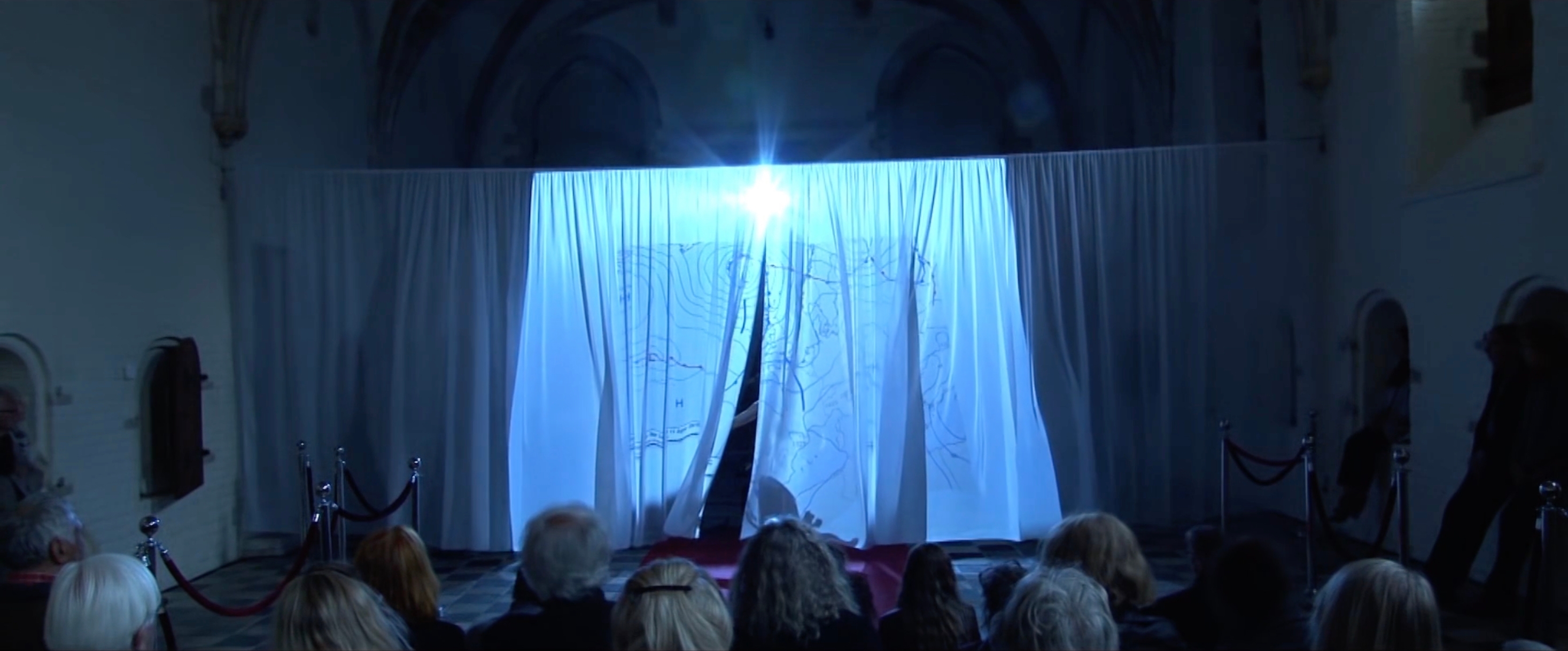Weather Drawings
Marinus Boezem, Frances-Marie Uitti
Performance
2015

Marinus Boezem experiences the weather as a constant sensual adventure: an experience that is familiar yet incomprehensible, no matter how hard we try. Boezem’s weather charts are a means of giving form to this abstraction: the weather at a certain moment in a particular place is represented in lines. The lines make the weather legible, tangible. The drawings also mark our position in time and space.
In this performance the experience and associations that the weather evokes for Boezem are being heard as music. Frances-Marie Uitti, who moved from her native America to Europe in the 1970s, was one of the first cellists to improvise on contemporary art. For Weather Drawings she interpreted the weather forecast on her cello. The idea for this work existed for a long time but was never performed before.
For contemporary composers a weather chart can be read as a graphic score. It enables them to play the weather and to react to the weather through music.
Contemporary music, in particular the music of the 1960s and 1970s, plays an important part in Boezem’s artistic practice. He feels a kinship with composers such as Louis Andriessen, John Cage, Willem Breuker and Giacinto Scelsi. Frances-Marie Uitti, who as a composer herself belongs to this group, is one of the most important interpreters of Scelsi’s music. Giacinto Scelsi (1905-1988) was a student of Arnold Schoenberg. His music is characterized by restrictive rules, making sparing use of notes and musicians. For him it was not necessary for the work to be performed: the existence of the composition was enough.
